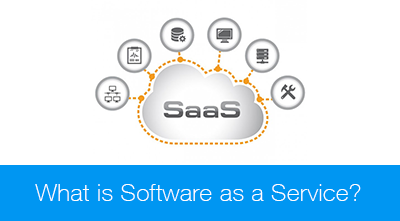What is Software as a Service (SaaS)?
Software as a Service (SaaS) is a category of cloud computing services that allows users to use software applications over the Internet as a service.

SaaS, or software as a service, is pretty much exactly what it sounds like – software delivered as a service, rather than purchased outright. There are many examples of this, ranging from SalesForce to MS Office 365. The primary benefits here are being able to constantly stay up to date, not having to repurchase software when new versions are released, and often not even having to worry about installing the software on local machines.
Why Does Software as a Service Matter?
Like most other forms of cloud-based computing, SaaS matters for many different reasons, but those reasons can vary from one business to another. For instance, one business might appreciate the fact that they don’t have to manually update their software over time. Another might appreciate the fact that they don’t have to run software on their own servers, while another could benefit from the fact that they don’t have to purchase new hardware or worry about software licensing.
SaaS delivers quite a few important features and advantages to businesses of all sizes, and in virtually every industry on the planet. These include the following:
Automatic Updates: One of the most common security problems within an organization is not applying updates and patches when they are released. With SaaS, these are handled on the server end, rather than the business end.
Accessibility: SaaS applications are accessed through the Internet. This means that users can access the programs they use every day from any Internet connected device, whether that’s a workstation in the office, a laptop at home, or a tablet or smartphone while on the road.
Offline Functionality: While you will have to connect to the Internet to use most SaaS options, some providers have developed at least some offline functionality. While this is not widespread, it is becoming more and more common.
Scalability: Like other cloud-based solutions, SaaS is a pay as you go system. You pay for what you use. That means you can scale it up or down as your needs change, at the drop of a hat. This saves money and time.
The Challenges with SaaS
While SaaS is well established and offers definite value, there are some challenges here. Perhaps the most obvious is the fact that this software is cloud-based. That means you can only access it through the Internet. While there are some options that offer offline functionality, that’s not the rule here. So, if your Internet connection isn’t great, or goes out frequently, this might not be the option for you.
Another potential challenge here is customization. Initially, SaaS options weren’t particularly customizable. That’s beginning to change, but it’s not quite to the point that many businesses would prefer.
Finally, using SaaS options does mean that you are dependent on a vendor to maintain that software, manage it, keep it available and protect it (and the data that you have stored within the system).
SaaS is a valuable solution that delivers many benefits. And, while it is not perfect, its many benefits definitely outweigh the few drawbacks.